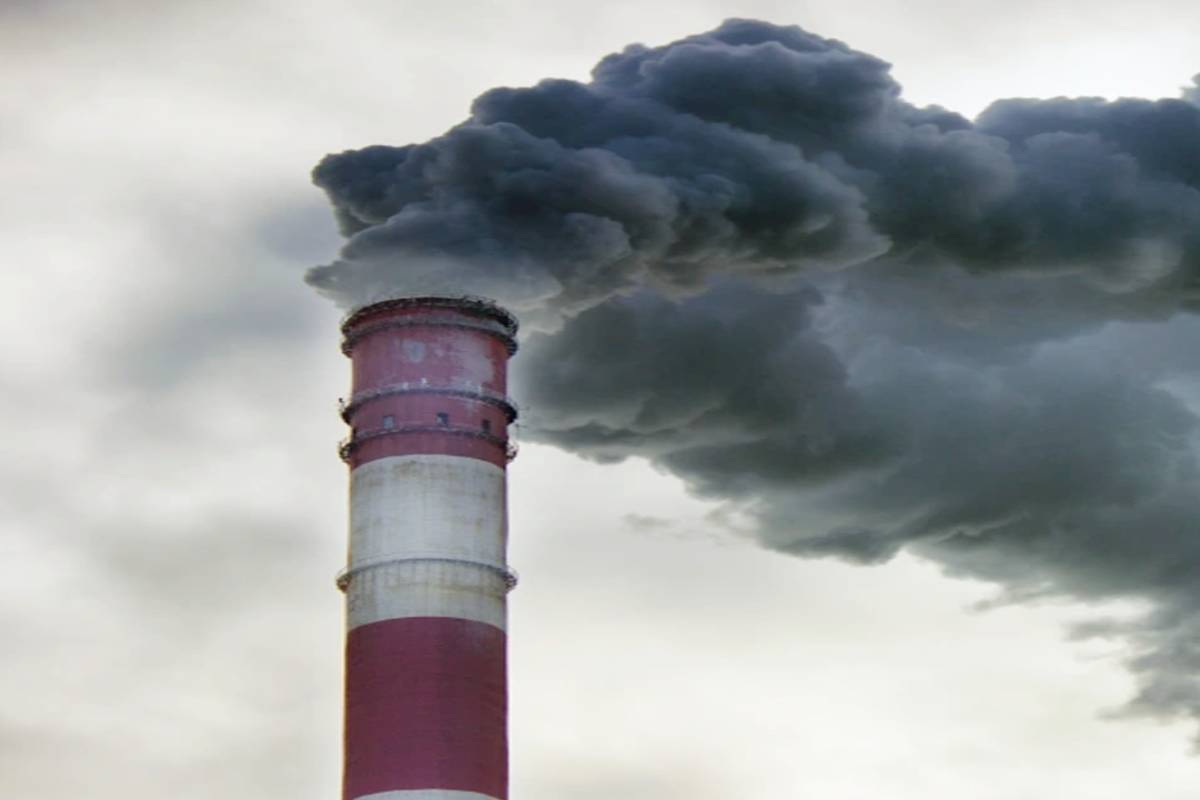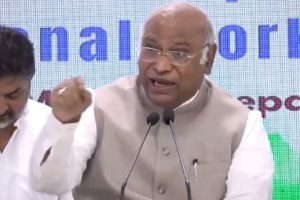‘If there is a paradise on the face of the earth,
It is this, it is this, it is this’
The Mughal emperors had made Persian their court language. Engraved and filled with gold on the walls of Diwani Khas in Delhi, the above lines were written with pride. Its Persian version is: Agar firdaus bar roo-e zamin ast, hamin ast, hamin ast, hamin ast”. Tagore translated it in Bengali: “Swargo jadi kothao thake ei dharanir majkhane, ei khane ta eikhane go, eikhane ta eikhane.”
Now, the fragrance of paradise is lost totally. India’s environment is no more beautiful, but horrendous. The recent report of the University of Chicago on Air Quality Life Index (AQLI) of India has assumed alarming proportions, particularly as far as its northern part is concerned, costing an additional 2.5 to 2.9 years of life expectancy of an average individual. The research by the varsity’s Energy Policy Institute emphasised India’s extremely high level of air pollution cutting 480 million lives short by nine years in its northern region and called it the most polluted country in the world.
Amidst nationwide concern over the Covid-19 crisis, followed by several lockdowns, the air quality of Delhi and all major cities of India led to a significant reduction in pollution as reported by the Central Pollution Control Board (CPCB). The travel restrictions on vehicles and closure of industries may have contributed. According to the report, 54 cities in the country registered “good” and “satisfactory” air quality in March last year before imposition of the lockdown; one week later, 91 cities recorded minimal levels of air pollution.
India’s capital which battles throughout the year to curb pollution also showed significant improvement of Air Quality Index (AQI). Air quality index between 0 to 50 is considered as good, 51 to 100 satisfactory, 101 to 200 moderate, 201 to 300 poor, 301 to 400 very poor and 401 to 500 severe. The ‘Janata Curfew’ may be regarded as a blessing in disguise so far as air pollution of the country is concerned.
On 12 October last year, a layer of haze lingered over several parts of Delhi and plunged the city in the ‘very poor’ category, days before some stringent measures to combat air pollution come into force under the Graded Response Action Plan (GRAP). The Air Quality Index (AQI) data according to the Central Pollution Control Board reveals values exceeding 300 in many parts of the capital and adjoining areas.
The action initiated by authorities to curb the menace is too little and too late and exposes gross negligence. The Indian Medical Association sounded an alert but the Delhi government locked horns with the Centre over its obligations and the matter reached the apex court. Despite the National Green Tribunal’s stringent stricture, no respite for common people seemed evident and the situation deteriorated considerably. The closure of primary schools, entry of trucks, implementation of odd-even vehicular movement in the NCR and creation of artificial clouds for rain are nothing but short-term measures.
Concerned with the deadly smog that engulfed the capital, the NGT some time back banned construction and industrial activities in Delhi-NCR and ordered taking of adequate steps to minimise dust contamination by sprinkling water on the roads. The maintenance of air quality standards is the duty of the Union and state governments. It transpires now that it has been the collective failure of elected governments, technocrats and bureaucrats. The Union Environment Ministry has given cognizance to the problem and constituted a seven- member committee to monitor measures to curb air pollution. The Central Pollution Control Board (CPCB) and Environment Pollution (Prevention and Control) Authority (EPCA) should initiate action after assessing the current situation.
The air that Indians breathe is turning more toxic by the day and an average of two deaths take place due to air pollution, according to noted medical journal The Lancet. It also substantiates that over a million Indians die or are at the point of death due to air pollution and some of the worst polluted cities of the world are in India including its capital.
The smog, fog and smoke contamination in the northern parts of India is also extracting a heavy toll; every day two lives are lost in India due to air pollution. Air quality in all major cities of India ~ New Delhi, Patna, Kolkata. Mumbai, Chennai ~ is far from satisfactory.
The Lancet however contradicted some Indian reports and pointed out that coal-fired power plants contribute to 50 per cent of pollution. The emissions from automobiles also cause mischief, including its incredibly dangerous contaminated polynuclear aromatic hydrocarbons (PAH) which are extremely carcinogenic. The Lancet report pointed out potential catastrophic risks to human health and need for immediate, effective and meaningful environment management. The air pollution of Delhi and Kolkata as reported by World Health Organization and United Nations environment program has assumed alarming proportions during the last several decades.
The air we breathe is poisoned with anthropogenic and natural emissions all the time. However, air pollution is not a new problem. As long as man has lived in cities, he has had a propensity to pollute the air. It is a problem of the ever-expanding technological society. The situation has been accentuated by the monstrous climatic change. Most artificial impurities are injected into the atmosphere at or near the earth’s surface. Therefore, what is critical about air pollution is its scope and severity. It is well known that for most pollutants the troposphere cleanses itself within a very short period of time because of the so called “vertical missing ability”. Rainfall also helps in removing the impurities to a certain extent, but acid rain damages the environment, now a matter of grave concern. Therefore, any substance that is not part of air’s gaseous make-up is regarded as a pollutant. Air-borne suspended particulate matter (SPM), respiratory particulate matter (RPM) and contaminant gases exist in the atmosphere in various degrees. Air pollution is not confined to a particular territory but is a trans-boundary phenomenon.
The problem is particularly acute in major Indian cities and its suburbs where the air is unclean according to standards fixed by WHO. The ever-increasing urban population is also posing a serious problem. Emission from vehicles has been identified as a major source of pollution in the Delhi metropolitan region. The situation is appalling owing to the increasing number of vehicles and the limited space for their movement. Domestic consumption of fossil fuels, sometimes out in the open, and pollutants from small industries, building and road construction, ever-increasing number of vehicles, whimsical burning of agricultural waste and emission of SPM from thermal power stations are accentuating the problem.
The pollutants vary from one place to another. Their intensity is most in the heart of the city. The common air pollutants in Delhi are sulphur dioxide, oxides of nitrogen, carbon monoxide, hydrocarbons, peroxy acetyl nitrite (PAN), which causes irritation of eyes, heavy metals and traces of incredibly dangerous polynuclear aromatic hydrocarbons (PAH) which are carcinogenic in character. The poor and weaker sections of society are acutely affected by pollution. The pavement dwellers, underprivileged and vulnerable groups are exposed to direct health hazards. In addition, heavy air pollution leads to higher rates of mortality and morbidity.
Leaded petrol has been banned in most developed countries. But unleaded petrol has other disadvantages which need special attention. Lead-free petrol releases a higher level of aromatic organic compounds and a high concentration of benzene which is known to be potentially carcinogenic. According to WHO, the risk of cancer is substantial. Suitable measures need to be taken immediately to eliminate the emission of toxic benzene into the air.
Given the horrifying level of air pollution in major cities of India, how is it that millions manage to survive? One probable explanation is that the pollutants are shared by millions of people, and they act as biological filters. The body doesn’t immediately suffer any dangerous symptoms, but they arise after a prolonged period. As the pollutants are chiefly the outcome of auto-emissions, the entire auto-emission regulatory process needs to be revamped immediately. Reduction of vehicular emissions through continuous checks, strict enforcement of the law and periodical survey of emission control equipment are vital. The air quality monitoring process should be strengthened.
The use of catalytic converters in a car exhaust system has its benefits. The use of lead-free petrol in cars without converters is a great risk to public health. Exposure to benzene at service stations should be minimized. All service stations must display warnings about the risk of such exposure. Vehicles that run on outdated technology should be immediately discarded. Developing suitable technology for manufacture of electrical cars, gradually replacing diesel and petrol vehicles, would be beneficial.
Planting more trees in the city can cleanse the air. The infrastructure must be suitably developed and on a priority basis. Equipment for continuous auto-emission control, including mobile laboratories, need to be utilized properly. Finally, the success of mitigating air pollution depends largely on the participation of people and awareness of environmental health hazards.
Advertisement











